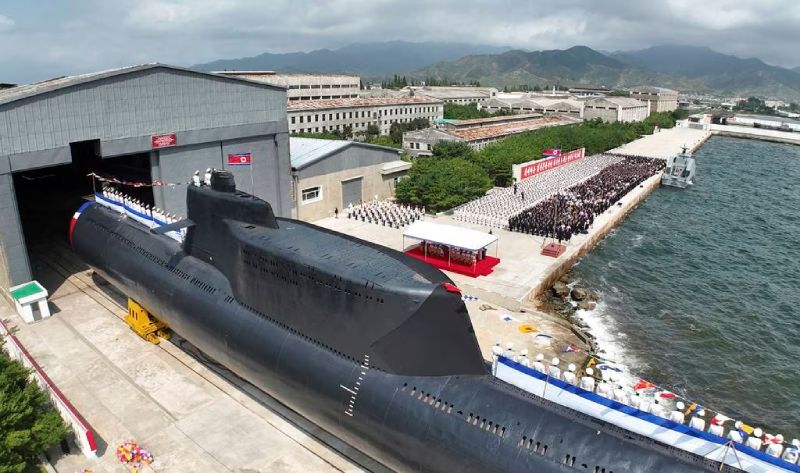A new ballistic missile submarine from North Korea has been launched, and it is thought that it can fire both ballistic and cruise missiles.
Kim Jong Un, the leader of North Korea, was pictured by official media during the submarine’s launch ceremony on September 6th. The event was held at the Sinpo shipyard at North Korea’s Pongdae Submarine Factory.
The government has described the boat as a “tactical nuclear attack submarine.”North Korean state media quoted Kim as saying at the ceremony that the country “will accelerate the nuclear armament of the Navy without letup” while also pushing forward a “plan for building nuclear submarines.”
Additionally, according to reports, Kim stated in his address that the submarine will be prepared to launch “both preemptive and retaliatory strikes” and that it is designed to oppose U.S. and South Korean “invasion fleets.”
Analysts think the vessel is a repaired and modernised Romeo-class diesel-electric submarine of Soviet design. The propeller region of the submarine was obscured in the photographs supplied by North Korea, probably in an effort to hide its origins, according to Joseph Dempsey, a research associate for defence and military analysis at the think tank International Institute for Strategic Studies.
Dempsey also thought that the recently launched submarine was the same one that North Korea flaunted in 2019 when Kim visited Sinpo. A massive missile compartment that was built to the submarine’s sail was spotted in high-resolution official images, along with 10 doors that are thought to be for the vertical-launch missile tubes that are visible. Two rows of five hatches each make up the hatches, with the front four appearing to be larger than the other six.
While the latter are anticipated to include launch tubes for submarine-launched cruise missiles, the former are thought to be for holding submarine-launched ballistic missiles.
A prior test of North Korea’s Pukguksong-1/KN-11 sub-launched ballistic missile was conducted. Additionally, the naval force of the nation is thought to have operated up to 20 Romeo-class vessels, though it is unknown how the remaining vessels in the fleet are now doing.


